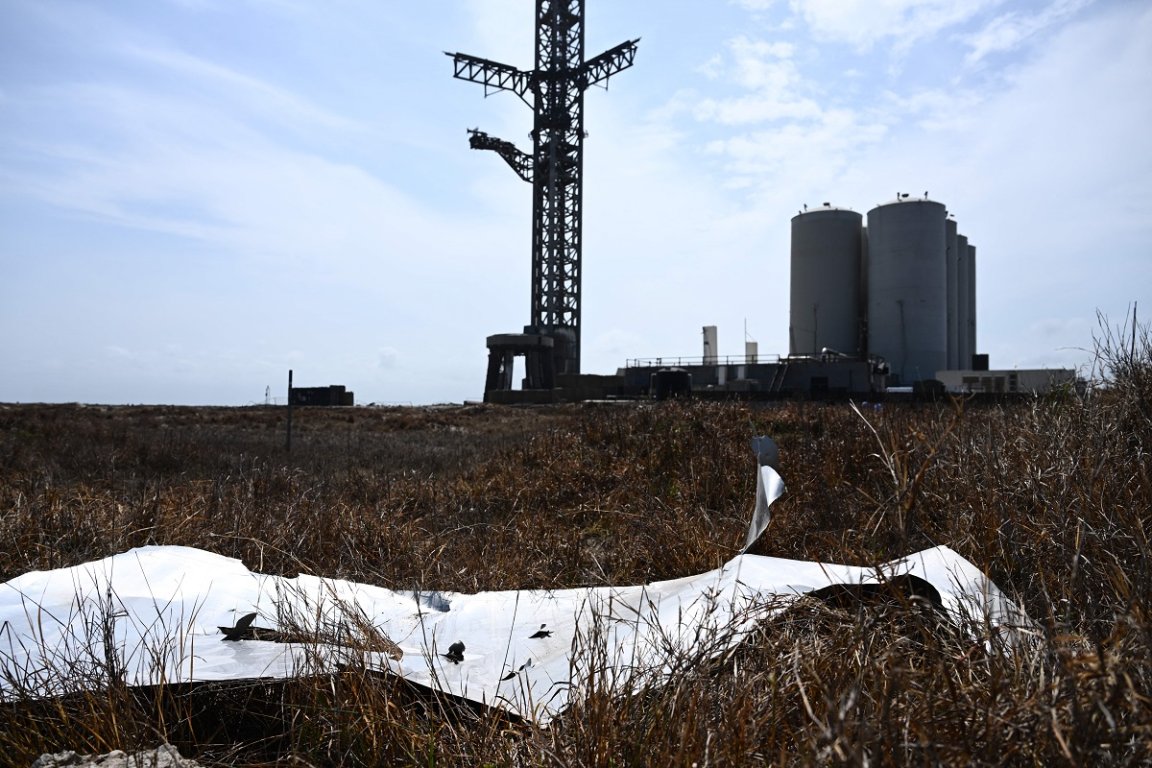
Local Carnage
When SpaceX’s Starship exploded midair just minutes into its first orbital flight attempt in April, the real impact was felt on the ground before it even took to the skies.
The sheer force of the most powerful rocket in the world obliterated its own launchpad, and the fallout that followed stunned wildlife officials in the area, some of whom suspected that they were prevented from initially investigating the launch site, Bloomberg reports.
Chris Perez, a biologist at the Fish and Wildlife Service (FWS), described the carnage this way in an email obtained by Bloomberg: “The [launchpad] explosion was so extensive it sent concrete chunks flying into the surf.”
Some of these chunks were found as far as a half mile from the launchpad, according to FWS documents examined by Bloomberg. The debris field, spanning 385 acres, was riddled with craters; a resulting fire swallowed three and a half of them, incinerating bird eggs and land crabs.
At one point, FWS officials were confused why they weren’t allowed on a beach on the site, while a sea turtle conservationist group had been. A senior SpaceX employee’s only explanation was that the group was conducting a survey outside the hazardous area.
Deflected Measures
By now, it’s well documented that SpaceX failed to implement industry standard measures that would have dampened the forces of Starship’s launch.
One way is to install a flame diverter that redirects the exhaust of a rocket away from the launchpad. Another is a water deluge system, which uses water to absorb the impact.
Had SpaceX used either of these — which it now is — the damage to the launchpad could likely have been avoided. But who’s to blame for blowing off these safety standards? The company’s CEO Elon Musk is a good guess.
Per Bloomberg, Musk was “pretty confident” that the launchpad wouldn’t need a flame trench. But Perez, who is by no means a rocket scientist, had seen the writing on the wall: “They need a flame diverter or flame trenches and a water deluge system!”
Failure to Launch
As the old adage goes, you reap what you sow.
Starship’s launchpad “was totally destroyed and will likely force them to re-design the whole thing,” Perez said in an email to a US Department of Interior attorney.
“Probably won’t see another launch for a while,” he added — presciently, as it would turn out.
Soon after the launch, the Federal Aviation Administration grounded Starship as it conducted a “mishap investigation.”
And that hasn’t changed. At the end of last month, the FAA put the kibosh on hopes of another launch happening anytime soon, as it’s still waiting for SpaceX to cough up its plans to avoid environmental damage during its next launch.
More on SpaceX: The Department of Justice Just Sued SpaceX